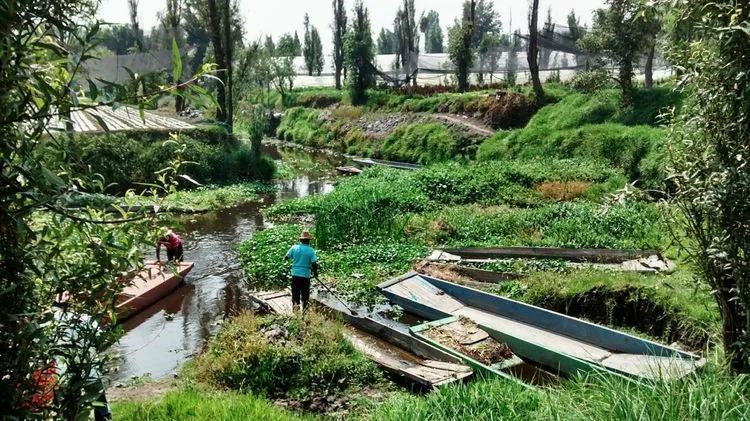
Probably, you are already familiar with the hanging gardens (like the Hanging Gardens of Babylon), so meet the floating ones! They existed in different cultures, for example, in China, Myanmar, etc. In this article, we will talk about Aztec floating gardens, chinampas, which were constructed to feed the population.
Are They Really Floating?
In the Nahuatl language, the word 'chināmitl' means 'square made of canes,' which describes chinampas pretty well. To create a chinampa floating garden, Aztecs needed to pound in a spear around the perimeter of the future patch. Then spears should be interlined with a cane. After that, the space should was filled in with soil.
Did you notice something interesting? Yeah, these floating gardens were fixed to the bottom of a lake. Aztecs chose shallow lakes and rivers or placed them somewhere on the lake's edge.
History Behind Chinampas
Floating gardens were invented by Aztecs about 1250 CE. Since their empire grew constantly, they needed to supply it with a bigger amount of food. And it was the moment when chinampas came in handy. These gardens were drought-resistant and didn't attract pests. And the most important thing: they brought a big harvest of various crops such as corn, beans, squash (very important for Aztec diet), etc.
Aztecs built them on Xochimilco, Chalco, and Texcoco lakes. The floating gardens surrounded places like island-city Xaltocen and Aztec capital Tenochtitlan (modern Mexico). According to Christopher T. Morehart, the chinampas could support even more than the estimated Aztec population. Isn't it impressive? Then why did such a productive method of agriculture decline?
Time of Decay

Everything changed with the colonizers' arrival. The Spanish were sort of fascinated with the floating gardens. But they weren't interested in continuing the tradition because this type of gardening required a lot of manual work. And since the Spanish drained a lot of the natural resources, including aquatic ones, it was hard for local people to keep practicing this agricultural method. Drained rivers and lakes were the reason why a lot of chinampas were abandoned. So the dawn of the Aztec empire meant no good for the future of these floating gardens.
Modern Floating Gardens
Now, this agricultural method is experiencing a revival. Some locals have founded businesses based on the concept of chinampas. They sell crops grown in traditional floating gardens. People respond very well, so demand becomes a motivation to keep farming on floating gardens.
According to the Food and Agriculture organization, chinampas have huge potential. They can help farmers adapt to climate changes, preserve agricultural biodiversity, and even reduce poverty. That is why these floating gardens were selected as a Globally important Agricultural Heritage System.
The history of Aztec floating gardens is a reminder that sometimes good ideas can be forgotten. Still, it's never too late to bring them back. By the way, modern chinampas are open to tourists, so if you want you can visit them in Mexico!
FAQ
What Were Aztec Floating Gardens?
Aztec floating gardens, or chinampas, were man-made islands built in shallow lakes to grow food for their booming cities. Farmers wove reed frames, filled them with lake mud, and anchored them with trees.
